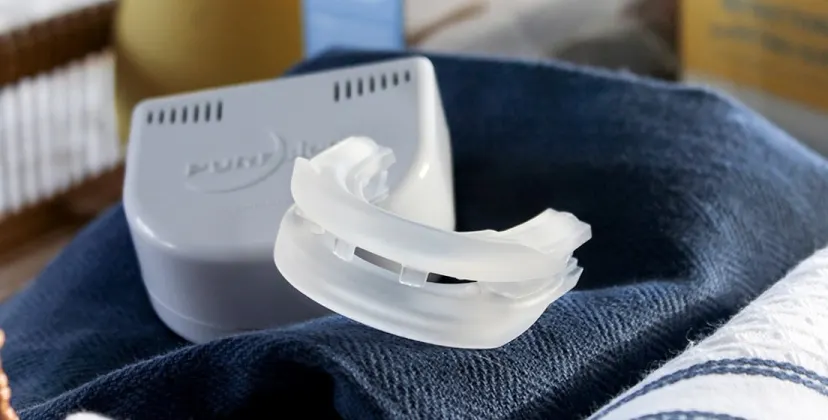From Headaches to Jaw Pain: How a Mouthpiece Can Address TMJ Symptoms
Temporomandibular joint (TMJ) disorder is a common condition that affects the jaw and surrounding muscles. It can cause a range of symptoms, from headaches and jaw pain to difficulty chewing and even hearing problems. If you are experiencing these symptoms, you may have been diagnosed with TMJ disorder. While there are various treatment options available, one highly effective solution is the use of a mouthpiece. In this blog post, we will discuss how a mouthpiece can help address TMJ symptoms and improve your overall quality of life.
Understanding TMJ Disorder
Before diving into the details of how a mouthpiece can address TMJ symptoms, it is important to understand what TMJ disorder is and what causes it. The temporomandibular joint is a hinge that connects your jaw to your skull and allows you to open and close your mouth. When this joint becomes damaged or inflamed, it can lead to TMJ disorder.
The exact cause of TMJ disorder is not known, but there are certain factors that can contribute to its development. These include jaw injuries, arthritis, teeth grinding, misalignment of the jaw, and stress. Women are also more likely to develop TMJ disorder than men. The symptoms of TMJ disorder can vary from person to person and can range from mild to severe.
Symptoms of TMJ Disorder
The most common symptom of TMJ disorder is jaw pain, which can be felt in the joint area, the face, or even the ears. This pain can be sharp and sudden or dull and constant. Other symptoms may include difficulty opening and closing the mouth, clicking or popping sounds when chewing, headaches, neck pain, and difficulty chewing or talking. In some cases, TMJ disorder can also cause dizziness, tinnitus (ringing in the ears), and even vision problems. These symptoms can greatly impact a person’s daily life and may lead to a decrease in overall quality of life.
How a Mouthpiece Can Help
A mouthpiece, also known as an oral appliance, is a custom-made device that is worn in the mouth to help alleviate symptoms of TMJ disorder. There are different types of mouthpieces available, but the most commonly used for TMJ disorder is a splint or nightguard. These devices are typically made of a plastic material and are worn over the teeth to help stabilize the jaw and prevent teeth grinding.

From Headaches to Jaw Pain: How a Mouthpiece Can Address TMJ Symptoms
One of the main ways a mouthpiece can help address TMJ symptoms is by reducing pressure on the jaw joint. The splint or nightguard acts as a barrier between the upper and lower teeth, preventing them from coming into contact with each other and causing further damage to the joint. This can help to decrease pain and inflammation in the joint, providing relief for those suffering from TMJ disorder.
Additionally, a mouthpiece can help to correct misalignment of the jaw. By wearing the device, the jaw is repositioned into a more natural and comfortable position, which can alleviate symptoms such as jaw pain and difficulty opening and closing the mouth.
Another benefit of using a mouthpiece for TMJ disorder is that it can help to reduce teeth grinding. Teeth grinding, also known as bruxism, is a common symptom of TMJ disorder and can cause further damage to the jaw joint. By wearing a mouthpiece at night, the teeth are unable to come into contact with each other, preventing grinding and reducing the risk of damage to the joint.
The use of a mouthpiece can also help to relax the muscles surrounding the jaw joint. TMJ disorder can cause these muscles to become tense and tight, contributing to pain and difficulty with jaw movement. By wearing a mouthpiece, the muscles can relax, reducing pain and improving jaw function.
Choosing the Right Mouthpiece
If you are considering using a mouthpiece to address your TMJ symptoms, it is important to choose the right one for your specific needs. A dentist or orthodontist who specializes in TMJ disorder can help you determine the best type of mouthpiece for your individual case. They will take impressions of your teeth and jaw to create a custom-made device that fits comfortably and effectively addresses your symptoms.
It is important to note that while mouthpieces can be highly effective in treating TMJ disorder, they may not work for everyone. It is always best to consult with a healthcare professional before starting any new treatment to ensure it is the right option for you.
Conclusion
TMJ disorder can cause a range of uncomfortable and disruptive symptoms, but with the help of a mouthpiece, these symptoms can be effectively managed. By reducing pressure on the jaw joint, correcting misalignment, and relaxing muscles, a mouthpiece can provide relief and improve overall quality of life for those suffering from TMJ disorder. If you are experiencing symptoms of TMJ disorder, don’t hesitate to consult with a healthcare professional about the possibility of using a mouthpiece to address your symptoms.
In summary, TMJ disorder is a condition that affects the jaw and surrounding muscles, causing symptoms such as jaw pain, difficulty chewing, and headaches. A mouthpiece, also known as an oral appliance, can help alleviate these symptoms by reducing pressure on the jaw joint, correcting misalignment, and relaxing muscles. It is important to consult with a healthcare professional to determine the best type of mouthpiece for your individual case.
